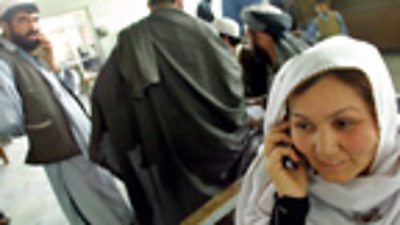Downloads
If it will be low cost then it will be good … we are suffering a lot in terms of having access to a clinic or health worker because of transportation problems and economic problems.
����ý Media Action's qualitative research explored the maternal and child health information that is available and needed, and analysed which people in households and the community have significant influence over pregnant women.
Publication date: September 2013
This scoping study forms part of a broader ����ý Media Action assessment into the feasibility of delivering maternal and child health (MCH) information to mobile phone users in rural areas who have low income and low levels of literacy.
Research approach
����ý Media Action used a qualitative approach consisting of six focus groups, 12 triad interviews and six in-depth interviews across urban and rural areas with new mothers and fathers, pregnant women, mothers-in-law and community health workers. These were conducted in the provinces of Balkh, Herat and Helmand. Our analysis of this data informed the ����ý Media Action project team, policymakers and other key decision-makers to formulate a future plan for health projects in Afghanistan.
“Most families who live in rural areas are faced with a lot of problems. Most of them don't allow their women to see a doctor; they try to treat the patients by themselves at home or are treated by unprofessional persons.” - Community Health Worker, urban Herat
Key findings
- At a community level, families tend to seek advice from numerous sources including religious leaders, traditional midwives and health clinics. The husband remains as the ultimate decision-maker. This suggests that along with targeting women directly, it is important to direct relevant messages to these other gatekeepers.
- Mobile phones are increasingly being used in Afghanistan and are accessible to women as well as men. Often they serve functional purpose, for women especially, as it allows them to remain connected with their husband and immediate family.
- The concept of using mobile technology to share accurate and relevant health information is well-received and is seen as both a cost- and time-efficient alternative to visiting a health clinic. This is despite some concerns about how literate people would need to be in order to use these, as well as some worries over the cost implications of such services.
Project context
In 2010, the Afghanistan Mortality Survey revealed high maternal and child mortality rates. The survey found maternal mortality to stand at 327 per 100,000 live births and child mortality to be 97 per 1,000. These rates are still among the world’s worst, with one in ten children dying before the age of five. The focus of this research was among mothers, as well as others who play a role in the way MCH information is communicated including husbands, mothers-in-law and community health workers.
Implications and impact
Although access to information is available in both rural and urban areas, several other people are involved in getting relevant information to women before, during and after their pregnancies. (In this research we use the term gatekeepers to describe them.) At a household level, this includes both the male and female family elders, as well as the pregnant women’s husbands. In the community this includes religious leaders, traditional midwives and health clinics, suggesting that as well as targeting women, it is important to target these gatekeepers.
Findings also suggest that the husband will be the ultimate decision-maker. Further, just as “elders” play a traditional role in society as a source of guidance, intervention and communication, family elders offer guidance and facilitate dialogue around health decisions.
Participants can be influenced by what they read and hear through the media and are moving towards better health decisions. However, they are still limited by the cost and safety implications of travelling to the nearest reliable health clinic, as well as by the cost of medication and doctors' fees. While mobile phones are increasingly used by and accessible to women as well as men, network and technical capabilities and low literacy levels can restrict how much women are able to use them. More often than not phones serve a functional purpose, for women especially, as they allow them to remain connected with their husbands and immediate family. Women are also less aware of the costs of using mobiles and thus much more conscious of them.
Although television health programmes are considered to be an accessible and informative platform for receiving important health information, the concept of using mobile technology for a similar purpose is well received. It is seen as both a cost- and time-efficient alternative to visiting a health clinic despite some concerns about the literacy levels needed and cost implications for using the mobile technology. Participants are also aware that the network infrastructure may not be in place to support this initiative.
